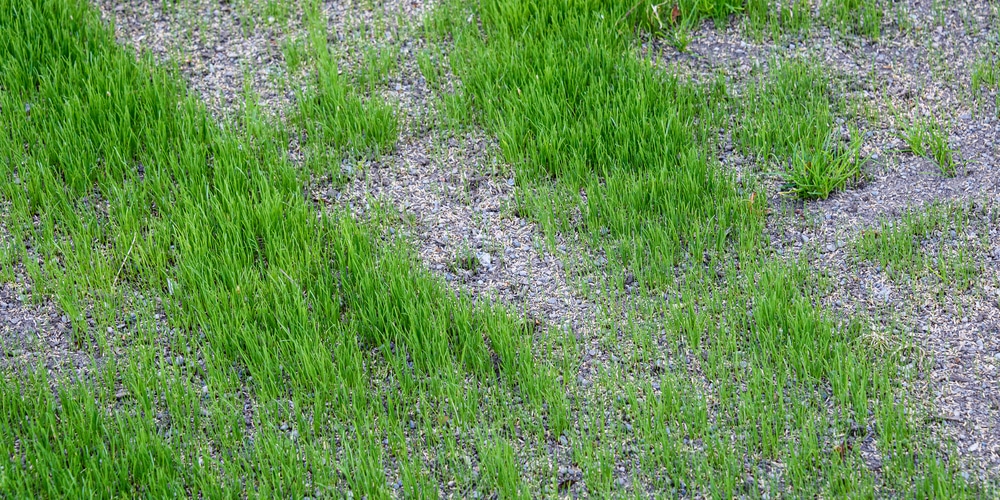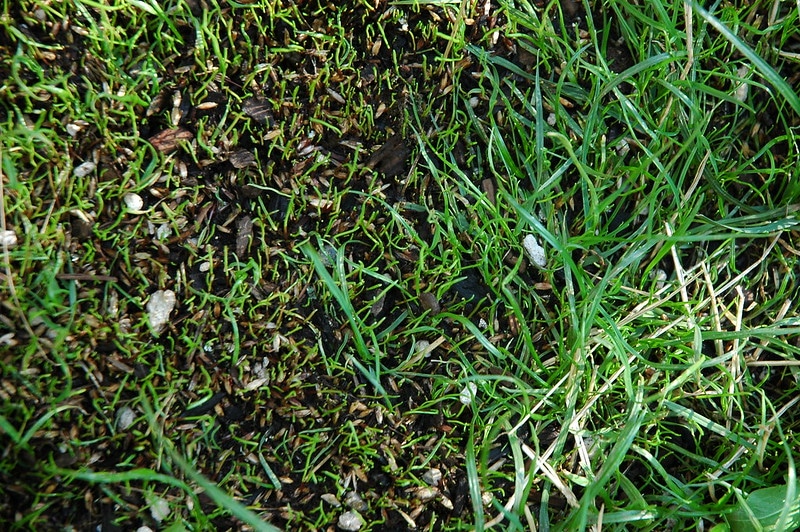If you’re one of the lucky ones, with emerald green and dense lawn that’s the envy of your neighbors, you might not think too much about overseeding. But, if you’re like most people, and your yard has seen better days, getting to fill in those patches and thin areas is probably at the top of your mind.
The main idea behind overseeding is to replenish the grass that has died off or become sparse by planting new seeds in those areas.
This practice is commonly used on golf courses, where a beautiful and perfectly manicured lawn is vital. Today, residential property owners are increasingly turning to overseeding as a way to improve the look of their lawns.
How Does Overseeding Work?
Overseeding is the concept of planting new grass seeds into an existing lawn without removing the old grass first. You may opt to choose the location you want to oversee, such as thin or patchy areas, or you can just spread the new seeds evenly over your entire lawn.
Once the new grass has sprouted and grown in, it will help to fill in any gaps in your existing lawn.
There are multiple benefits of overseeding the lawn, even for those who already have a fairly healthy lawn. Overseeding can help improve your lawn’s density, making it less likely to experience issues such as disease, pests, and drought.
Additionally, overseeding allows you to mix up the types of grasses in your lawn, which can provide a more varied and healthy lawn overall.
For example, if you live in an area that experiences hot summers, you may want to consider overseeding with grass that is more tolerant to heat and drought. This will help ensure your lawn stays green and lush, even during the hottest months.
Should You Kill The Weeds First?
One question you might have when preparing to overseed your lawn is whether you should kill the weeds first. Generally, if your lawn has weeds, it’s a sign that the grass is not as healthy as it could be. Weeds can take over lawns because they’re more resistant to pests and diseases, and they can outcompete the grass for resources.
Therefore, if your lawn has a significant weed problem, you may want to consider killing the weeds before overseeding. If not, your weeds could potentially stunt the growth of your new grass seedlings.
There are a few different ways to kill weeds on your lawn, including chemical herbicides and manual removal. If you choose to use an herbicide, make sure to select one that is safe for use on lawns, and follow the instructions carefully. You don’t want to accidentally damage your new grass.
Different Ways to Kill Weeds Before Overseeding
There are different ways you can kill weeds in your lawn before overseeding. You may choose to use an herbicide, or you may opt for manual removal.
Herbicides:
If you choose to use an herbicide, make sure to select one that is safe for use on lawns, and follow the instructions carefully. Ideally, identify which weeds have taken over your lawn and select an herbicide that targets those specific weeds.
A selective herbicide will kill the weeds without harming your lawn grass. Non-selective herbicides will kill any plant they come in contact with, so use these with caution. When overseeding, we always recommend using a selective herbicide to ensure that your new grass seedlings or existing lawn grass are not harmed.
Manual Removal:
Another option for killing weeds in your lawn is manual removal. If you don’t like the idea of using chemicals on your lawn, or if you have a small weed problem, manual removal may be the best option for you.
To manually remove weeds, simply dig them up from the root using a shovel or trowel. You can always get away without using any tools. However, sometimes it’s helpful to have a sharp object to help loosen the soil and make weed removal easier.
Once you’ve removed the weed, make sure to dispose of it properly. Don’t just leave it on the ground, as it could take root and grow back. Instead, place it in a bag and throw it away.
Should I Kill Weeds Before Overseeding: Final Thoughts
Overseeding is a good practice for many lawns, as it can improve the density and health of your lawn.
However, before you get into the process of laying down new seeds for germination, kill the weeds first. This is to ensure that your new grass has the best chance to grow and to avoid any competition from weeds.

